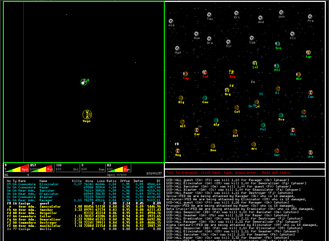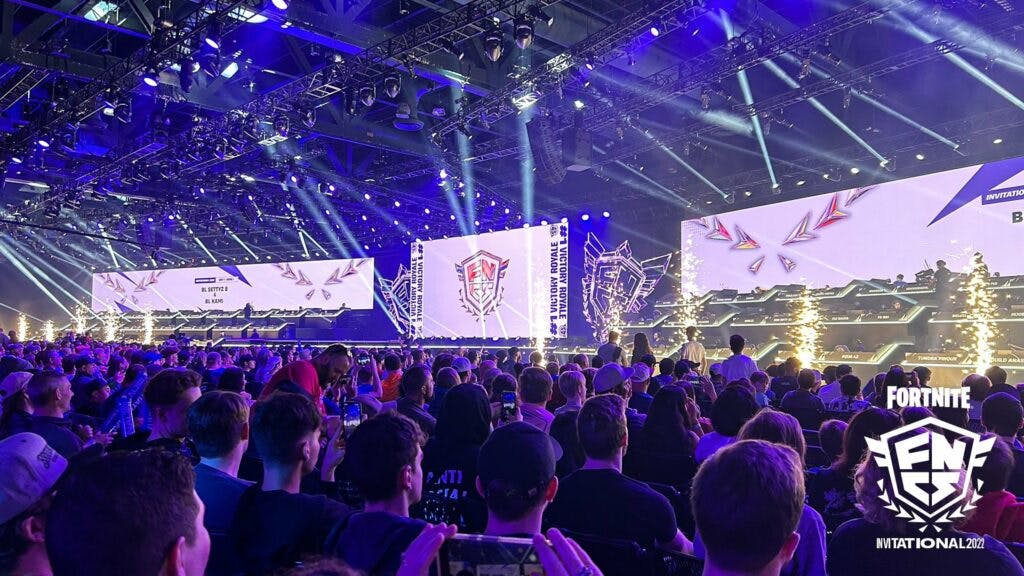Today esports is a multibillion dollar industry. But what are its orgins and how did it reach its position today. Here’s a detailed guide on how esports started and the different eras of esports over the years.
Today esports is one of the most promising industries in the world with a significant portion of today’s youth involved in esports. They could be players, they could casual viewers or they might just be industry professionals. But esports is one of the rise and shine industries of today with billions of dollars in investment. But what are esports’ beginnings? When did ‘esports’ start? Here’s a quick rundown of the history of esports.
Impact-Site-Verification: c9050751-95d5-4cd8-b2aa-963e8c30f193
There have been multiple eras in esports, starting from the very first video game competition in Standford University. The era of arcade games and then the rising popularity of PC video games. There have been several unfortunate events as well that set back the esports industry by quite a few years. With shady investors and unfulfilled prize money promises, the esports industry has had its fair share of ups and downs. But it has continued to grow through all of it and is one of the fastest growing and most promising industries in the world today. Now let's head back to 1972.
The first video game competition
In October 1972, computer science students at Standford University saw a unique flyer on the bulletin board.
The first 'Intergalactic Spacewar Olympics will be held here, Wednesday 19 October 2000 hours. The first prize will be a year's subscription to "Rolling Stone". The gala event will be reported by Stone Sports reporter Stewart Brand & photographed by Annie Liebowitz. Free Beer!
The dystopian name notwithstanding, this event is the earliest record of a competitive tournament in video games.
Spacewar!

Steve Russell in collaboration with Martin Graetz, Wayne Wiitanen, Bob Saunders, Steve Piner, and others developed Spacewar! In 1962. After its initial development, the game saw multiple further expansions by other students and university employees in the area. Initially written for the DEC PDP-1 minicomputer at the Massachusetts Institute of Technology, Spacewar! Became the first known video game to be installed on multiple computers (all PDP-1 variations).
Spacewar was extremely popular amongst the programming community and was often ported to other computer systems at the time. Being one of the first biggest influences in video games, Spacewar has had a direct influence on several other games over the years. Spacewar was added to the Game Cannon in 2007, the World Video game Hall of Fame and the International Center for the History of Electronic Games.
How to play
The original game featured two spaceships, ‘the needle’ and ‘the wedge’ maneuvering the gravity well of a star. Players would lose the game if their controlled ship would be destroyed, either via crashing into a torpedo, the star or into each other. Players would often fly near the tar to provide a gravity assist which would aid their movement on the screen. The initial versions of the game were played using switches, however, Bob Saunders eventually built a gamepad to reduce the difficulty.
The ships had a supply of rocket fuel and weapons. They also had a panic button - Hyperspace - which was a last-ditch means to evade enemy fire. The hyperspace feature would move the player’s ship to another location on the screen, although in subsequent versions of the game, Hyperspace also saw an increased probability of the ship being destroyed. Players would then use hyperspace only if they had little to no other option.
The ships were placed in opposite quadrants with starting positions as shown in the image above. The ships’ acceleration was realistic - it took time to accelerate and ships needed to fire in the opposite direction to decelerate.

The original screen of the game had a featureless background. You would see some dots, but during the gameplay, it was difficult to guess whether the ships are moving closer to each other or drifting apart. Steve Russell coded a random display of dots which significantly improved the quality of play.
Later Russell revealed in the interview Peter Samson was offended by the random display of dots and sat down to create the ‘Expensive Planetorium’. He used data from the American Ephemeris and the Nautical Almanac encoding the entire sky down to just above the fight magnitude. He would go further to reproduce a near-accurate display of the stars’ brightness. The planetarium displays all of the stars above fifth magnitude over Cambridge, Massachusetts in their relative brightness. The stars can be fixed or can move from right to left.
Dan Edwards made an important contribution to the game by introducing gravity to Spacewar. Up until this point, Spacewar was essentially a competition of a player’s reflexes and motor skills. Strategy would have little contribution to the outcome of a match between two players and would result in wild shootouts. Dan Edwards put in gravity calculations into the game wherein the star (the sun at the center of the screen) would have a gravity well that included the entire screen. Any ship that was not moving would be pulled towards the center and would annihilate as soon as it touched (came within striking distance) of the sun.
As the game developed, players started coming up with strategies to use gravitational force to their advantage. There were certain moves at the start of the game that became extremely popular amongst experienced players and would often be recreated in almost every match.
Most of the original basic gameplay was complete except for one feature - Hyperspace.
Hyperspace
The concept of Hyperspace was a last-ditch effort afforded to a player who had no other options.
When everything else failed you could jump into the fourth dimension and disappear. [...] Our ultimate goal was a feature that, while useful, was not entirely reliable.
It was something you could use but not something you wanted to use
With the hyperspace feature, there was always a risk you would spawn at the location of the sun. That would mean sure annihilation and the end of the game for you.
But why create a video game?
The students at Stanford University, who had access to the PDP-1 computer, wanted to create a program to display the capabilities of the machine.
In an interview with Rolling Stone magazine in 1981, they mention the criteria they thought were important to highlight the computer’s capabilities.
- It should demonstrate, that is, it should show off, as many of the computer’s resources as possible, and tax those resources to the limit;
- Within a consistent framework, it should be interesting, which means that every run should be different;
- It should involve the onlooker in a pleasurable and active way - in short, it should be a game.
Intergalactic Spacewar Olympics

On October 19, 1972, the Artificial Intelligence Laboratory at Stanford University hosted the first-ever esports tournament. The ‘Intergalactic Spacewar Olympics’ saw 24 participants, mostly from the universities themselves. The prize pool was a year-long subscription to Rolling Stone Magazine.
Bruce Baumgart won the five-man free-for-all tournament. The team competition crowned Tovar and Robert E. Maas as the champions. Compared to the modern era of esports, the prize pool for this tournament was negligible. But when we look back at that era, it is important to note that video games of the era were essentially a way to test the capabilities of the PDP-1 computer.
The Spacewar Olympics marks the origins of competitive video games. And the tradition stayed on with video game competitions continuing over the years.
The era of Arcade Video Games
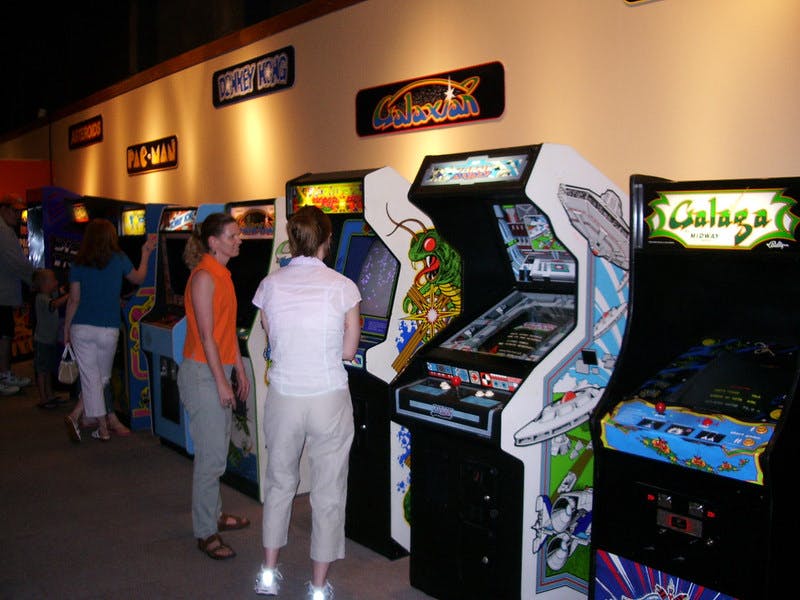
In 1974, Sega hosted the All Japan TV Game Championships, a nationwide arcade video game tournament in Japan to promote its video games in the country. Sixteen finalists (chosen from over 300 local participants) competed in this event.
Sega’s intention in hosting this tournament was to popularize its games, but the company representatives also realized the importance of such events. The Vending Times newspaper reported that an official for Sega “the importance of such tournaments to foster better business relationships between the maker-locationcustomer and create an atmosphere of competition on TV amusement games” (“Sega Sponsors All,” 1974, 69)
There was also televised esports during this time including the American show Starcade which ran for 133 episodes. Players were competing on arcade machines to top the previous high score. This period saw a renewed competition to secure new high scores with one’s name on them.

The Television industry leaped on to the chance of a possible new media package and we saw several esports shows. The BBC game show - First Class - included game rounds containing video games such as Hyper Sports, 720° and Paperboy. On the other side of the Atlantic, in the US, the Amusement Players Association held competitions with the popular game of the time - the Vs. Super Mario Bros. Vs. Super Mario Bros. is a 1986 arcade adaptation of the popular Super Mario Bros. with significantly difficult levels and harder-to-complete challenges. This game had a direct influence on the soon-to-be-released Super Mario Bros. 2.
Which was the first online video game?
Playing Netrek is like playing team chess on speed, or playing mind hockey.
He then goes on to describe Netrek as “graphical, it's played very, very fast, and it is played in teams, on the Net.”
With the advancements of technology at the time, it was no surprise to see the evolution of video games. The increased interest in video games allowed developers to focus on making their games more appealing to the public. Games were faster, and had better graphics. But Netrek had something else. It allowed people to not be together to play the game - a game changer of sorts.
Designed by Kevin Smith and Scott Silvey, the game was released in 1988 and written in cross-platform open-source software. A successor to 1986, Xtrek, Netrek was the third internet game and the oldest game still actively played as of 2022.
The game featured a space-war theme where armies would attack each other and try to destroy each other’s ships. Similar to the core concept of today’s MOBA’s Netrek saw players capture enemy planets by bombing them. They could then drop off armies they acquired from neutral planets.
The advent of the internet gave rise to a new generation of gamers who could compete against players they had never seen before. Games such as Street Fighter II, Fatal Fury and Art of Fighting were popular but they also gave ideas for new game modes to developers. ID software’s John Romero introduced the deathmatch mode in online multiplayer games such as Doom sowing the seeds for competitive gaming. A few years later, there were tournaments featuring Warcraft, Counter-Strike, Starcraft, Quake and more.
Early Video Game tournaments
The Cyberathlete Professional League
Founded by Angel Munoz on June 27, 1997 in Dallas Texas, the Cyberathlete Professional League is one of the pioneers of the modern league-based system of video game tournaments. The CPL specialized in console and PC gaming tournaments.
Tom "gollum" Dawson won the first Quake individual competition in 1997. Team competitions joined the circuit starting 2000 with the early years dominated by Swedish teams.Heaton was a part of the NiP team of 2001 that won CPL Winter 2001 over X3 winning $50,000.
Probably one of more famous tournaments was the Quakecon which featured a BYOC-type setting and was seen as a celebration of all of ZeniMax Media IPs. ZeniMax media was the owner of id software, the developers of Quake and other titles. Quakecon started in 1996 and has continued every year till date. The event had to move to an online format since 2000 due to travel restrictions and safety concerns following the pandemic.
Quakecon
The first QuakeCon in 1996 saw 30 people in attendance on Day 1, a number which grew to 100 after news of the gathering spread on the internet. Towards the end of Quakecon 1996, the entire id software team visited the hotel where the event was taking place, with group chat sessions feeding ideas that eventually found their way into future versions of the game.
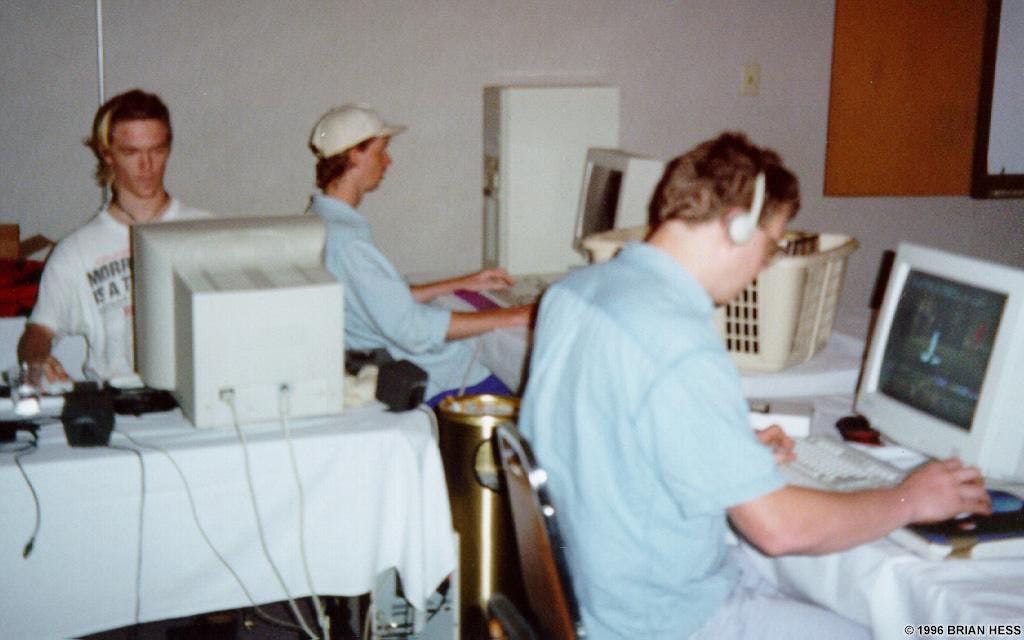
Today, Quakecon is one of the biggest LAN events in North America. In an interview with the Dallas Morning News, an id software employee reminscies about the history and growth of Quakecon over the years.
Profesional Gamers League
The Profesional Gamers League (PGL) ran its first tournament in 1997 for Starcraft. Sponsored by Microsoft, Nvidia and Levi Strauss, they raised over $1.2mil USD in sponsorship money. The first Professional Gamers League Finals took place in 1998 featuring two games - Command & Conquer Red Alert and Quake. Both the tournaments featured 1v1 match formats with David "DeepBlue" Magro winning the Command & Conquer tournament while Dennis "Thresh" Fong won the Quake tournament. Both players won $7,500 and received AMD computers as part of their winnings.
South Korea - The Unofficial Capital of esports
In the early 2000s, South Korea was the primary driver of esports growth with many video game tournaments taking place across the country. There were two reasons for this rapid growth. One was the wide availability and penetration of internet connectivity. The second reason were PC bangs which fostered a sense of community and later competition.
Internet Connectivity
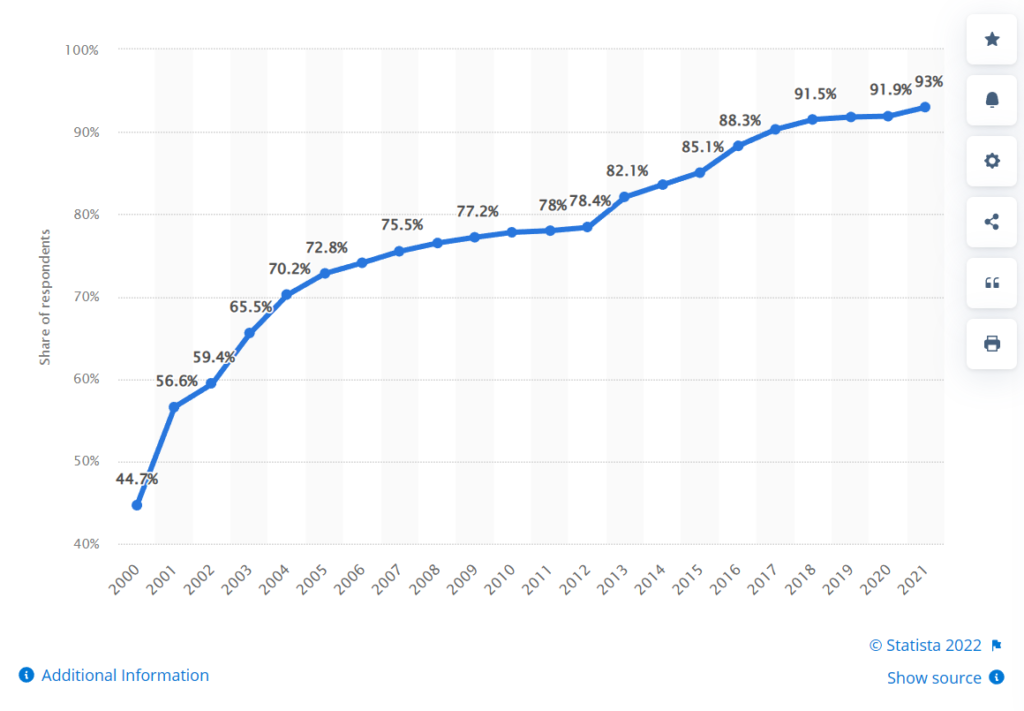
When Koreans embraced the concept of esports in the late 90s, they went all in. Rallying behind StarCraft: Brood War, Korea would build the esports culture it is today around the Blizzard game, naturally making it the most popular esport game of all time in Korea. In 2000, a governing esports body, called the Korea e-Sports Association (KeSPA) was formed. Tournaments were hosted with money on the line. Teams were created, filled with players, managers, and coaches. Esports started being shown on TV which led to the biggest bump to esports development—the incluWhen Koreans embraced the concept of esports in the late 90s, they went all in. Rallying behind StarCraft: Brood War, Korea would build the esports culture it is today around the Blizzard game, naturally making it the most popular esport game of all time in Korea. In 2000, a governing esports body, called the Korea e-Sports Association (KeSPA) was formed. Tournaments were hosted with money on the line. Teams were created, filled with players, managers, and coaches. Esports started being shown on TV which led to the biggest bump to esports development—the inclusion of big sponsors such as Samsung, Korean Air, and Asiana who played huge roles in the booming esports scene. From here onwards, Korea emerge as the esports haven of the world. Only in the mid-2000s did the West start to slowly catch on to the esports wave and Korea was miles ahead. (Yu, 2015, paras. 12–13)sion of big sponsors such as Samsung, Korean Air, and Asiana who played huge roles in the booming esports scene. From here onwards, Korea emerge as the esports haven of the world. Only in the mid-2000s did the West start to slowly catch on to the esports wave and Korea was miles ahead.
Initially experiencing very slow speeds, South Korean internet speeds were consistently above the 1Mbps limit after Thrunet started providing broadband services in July 1998. By 2004, 70% of South Korean population had internet access paving the way for the country to become one of the leaders of the internet in the early 2000s. And with it came the rise of internet gaming in the country.
"56 percent of Korean use Internet at least once a month". Yang, S. J. (2002) retrieved by The Korean Herald. August 11, 2013.
PC Bangs
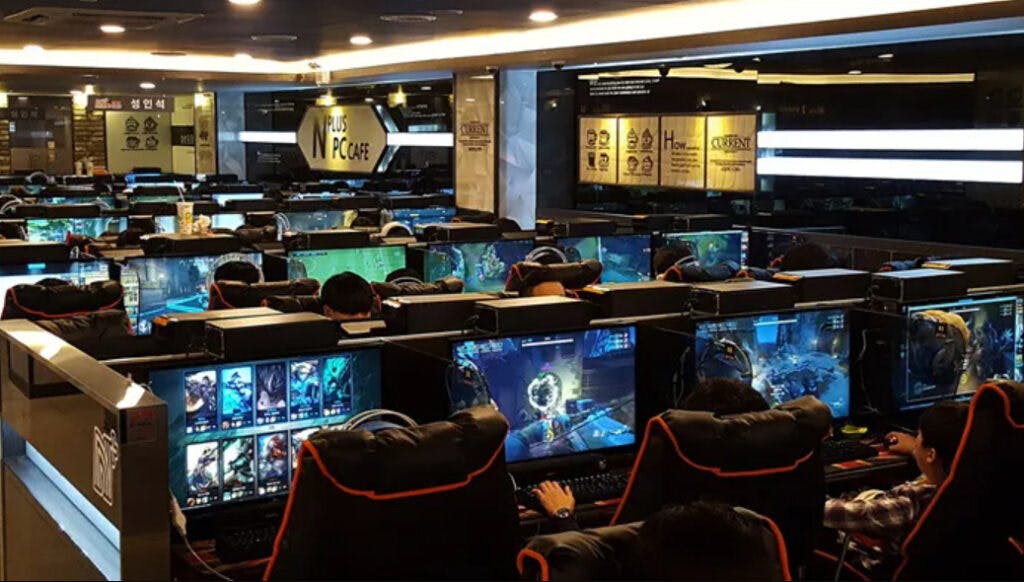
Another big reason for the rise of internet games and tournaments in South Korea was the PC Bangs. PC Bangs, which literally means a PC room are LAN gaming centers in South Korea. Players can play video games for an hourly rental fee at these PC Bangs. Despite the relative popularity of personal computers in South Korea, PC Bangs were also seen as a way of socializing among gamers. These Gaming centers also provided access to high-end gaming PCs at a relatively low cost, allowing users to experience their games in the best possible manner. Players would flock to the PC Bangs to play online. Some Korean multiplayer games also provided players with incentives, mostly in the form of in-game cosmetics when they logged in from these PC Bangs.

PC Bangs’ popularity rose with the release of Starcraft in 1998. With Blizzard’s support both in the organization as well as investment, esports tournaments moved out of PC bangs to hotel rooms and later stadiums. StarCraft’s release coincided with the expansion of PC Bangs, creating the perfect storm for the rise of esports in the country.
PC bang owners began to observe a strange phenomenon among their customers. Not only were people flocking to PC bang to play StarCraft, they were also coming to watch others play. Soon, PC bang began organizing informal competitions in which the best players built their reputations in the community, developed rivalries, and even cultivated fan followings. Before long, PC bang franchises realized that they could use these competitions as marketing tools, and began sponsoring individual players and teams, marking the beginning of professional Korean esports.

The Korean e-Sports Association (KeSPA) was formed as a part of the Ministry of Culture, Sports and Tourism, The primary objective of this association was to promote and regulate esports in the country.
Minister of Culture, Sports, and Tourism Park Jie-won coined the term "Esports" at the founding ceremony of the 21st Century Professional Game Association (currently Korean e-Sports Association) in 2000.
These PC Bangs saw friendly communities develop which later organically transitioned into competitions. The International Journal of communication 14(2020) highlights the importance of South Korea in esports’ early rise.
Evo Moment
One of the most important moments in esports’ history was ‘The Evo Moment 37’ of 2004. Also known as the Diago Parry, this singular moment remains one of the most iconic moments in esports’ history.
The Evo Moment 37, also commonly known as the Evo moment refers to a play in the Street Fighter III: 3rd Strike semi-final match semifinals match. The match was between two of the best players of the time: Daigo Umehara (playing Ken Masters) and Justin Wong (playing Chun-Li).
It was a Sunday on August 1, 2004. Some of the world’s best Street Fighter III: 3rd Strike players had gathered at the California State Polytechnic University. The semifinal match saw two of the best players from across the world face off against each other. Justin Wong was undoubtedly the best player from America, while Daigo was the best Japan had to offer.
The two players had never faced each other before this match. However, there was already a rivalry brewing partly because of the differences in their playstyle.
Wong picked Chun-li, infamous for her aggressive playstyle and kicking boots. Daigo picked Ken - a character with a playstyle that was diagonally opposite to that of Chun Li. But in the hands of Daigo, Ken was a masterpiece and this semifinal match demonstrated just why.
“Losing meant having to lower my head,” Daigo writes in his book, The Will to Keep Winning. “To me, that was reprehensible. I’d rather die than give up
The match started with Daigo on the backfoot. Despite being described as a calm and calculated player, Seth Killian, the match commentator said “A rare footage of Daigo actually angry” referring to Daigo’s increasing frustration over Justin Wong’s passive approach to the game.
With just 26 seconds left in the round, Wong could have let the clock run down and still won the match. But in fighting games, getting the K.O. had a special meaning and when Wong saw a slight opportunity to end the match, he took it.
Just Wong’s Chun-li unleashed the ‘Super Art’ a series of 15 high-powered super-fast kicks at the opponent. Each kick would deal damage even if it was blocked. And Daigo had all but a pixel of health remaining.
“I remember feeling the pressure as I watched my life gauge dwindle, thinking this might be the end,” writes Umehara in his book. “But when he had me in that corner, I entered into a Zen-like focus, prepared to do whatever it took.”
Daigo understood his only way of surviving and possibly winning the match was if he were to parry each kick instead of blocking them. Parrying is a high-risk high-reward move in Street Fighter 3. If a player leans into the attack at a precise moment he will not take any damage from the incoming attacks. The parry window - is four frames of animation. The reflexes required to execute this move - around seven one-hundredths of a second - repeatedly are simply unimaginable. But Daigo did it.
He parried each and every kick without taking a single iota of damage. The perfect execution was even impressive considering he did not have any advance notice of the initiation of Super Art move. After parrying the kicks, Daigo finished off Chun-li with his Shippu Jinraikyaku.
This moment, called Evo Moment #37 (a randomly chosen number) quickly became famous online. The moment reached more than 20 million people across the world etching itself in history books.
The Modern Era of Esports
One could say the modern era of esports is the one with the most explosive growth. Multiple factors played a key role in esports' growth over the past decade. Firstly, there were quality comes that came out at the start of the previous decade. Esports viewership figures rose prominently thanks to Twitch and better internet speeds. Gaming itself is an industry that has grown tremendously and with it provided the momentum required for esports to grow. Here's how the 'Modern era of esports' has shaped up so far.
Twitch
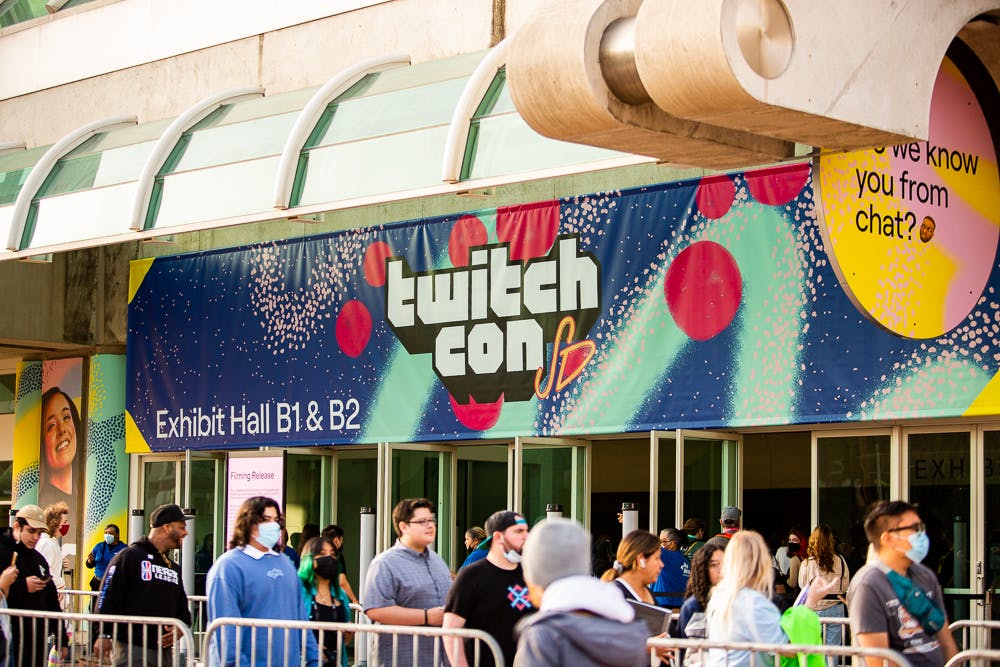
Any mention of the history of esports is not complete without talking about Twitch’s role in the development of esports. Today, there are millions of viewers watching video game tournaments from their homes. This number often rivals some of the biggest sporting events out there.
For tournament organizers, these eyeballs are their most important metric. More recently, tournament organizers have allowed co-streaming in a bid to increase the number of viewers for their events. Co-streaming allows approved influencers and streamers to broadcast live esports matches. But almost all of esports lives on Twitch. Today, Twitch is owned by Amazon, but it wasn’t always the case.
Origins of Twitch
Out of their desire to create a ‘big-brother’ style site where they could stream their lives emerged Justin.tv in 2005. Founded by Justin Kan, Emmett Shear, Michael Seibel, and Kyle Vogt, Justin.tv’s start was a single channel with founder Justin Kan streaming his life 24*7. He popularized the term lifecasting, although little did he know his creation would go on to become one of the most influential websites on the internet.
The website further expanded by forming thousands of channels where users could broadcast anything they wanted. It had a very YouTube-esqe feel with individual channels but for a general audience.
People began broadcasting their lives but soon various channels started streaming video games. In 2011, Justin.tv launched a new website called Twitch.tv, for gaming. Following the rising popularity of Twitch.tv, Justin.tv rebranded as Twitch Interactive in February 2014 to properly represent its focus. In August of the same year, Justin.tv was shut down and in the same month, Amazon bought Twitch.tv for $970 million.
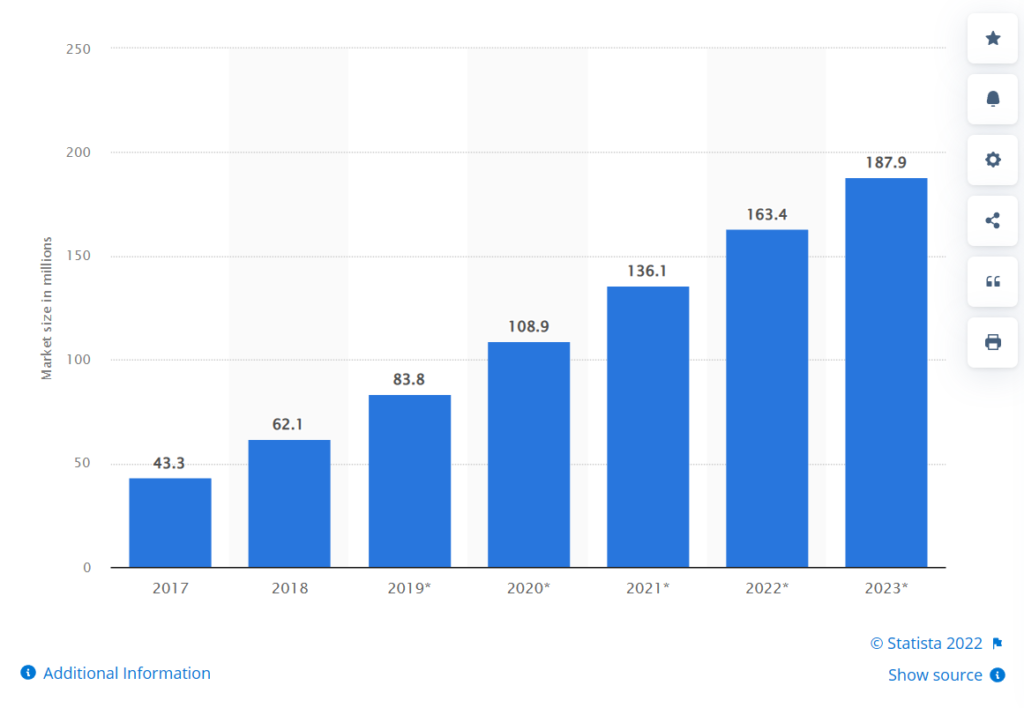
Twitch saw a meteoric rise in viewership which coincided with the rise in popularity of gaming and esports. By 2015, Twitch had more than 100 million viewers in a single month as per the Wall Street Journal. Over the years, several live-streaming websites tried to challenge Twitch’s dominance, but even Microsoft-owned Mixer could not pose a significant threat. As of 2022, YouTube Gaming remains the only potential challenger to Twitch’s monopoly in the esports live streaming market.
Despite Twitch being synonymous with esports, the platform's near-monopoly over esports streaming has posed significant problems for tournament organizers. One of the biggest sources of revenue for traditional sports is via massive exclusive broadcast rights deals. With a monopoly, despite high viewership numbers, Twitch often has the upper hand when coming to broadcast deal negotiations.
In recent years, YouTube Gaming has remained one of the only challengers to Twitch’s dominance. Despite gaming being one of the biggest sections on YouTube, the website has failed to pose a real and significant challenge to Twitch. But things can change. Most of the smaller contenders have now folded including Microsoft’s big splash with Mixer.
Twitch generated nearly $2.6 billion in revenue in 2021 showing a significant 41% YoY growth. The number of concurrent viewers also saw a 68% growth with the average number of concurrent viewers number reaching 2.78 in 2021. Content Creation has rapidly become a viable career alternative for many. With many players already playing their favorite video games, quite a few have also taken up streaming. Nine Million Twitch accounts streamed once a month in 2021 marking a 30% year-on-year increase. And finally, one of the most important metrics is the number of hours watched. In 2021, 22.8 billion hours of Twitch were consumed marking a 69% increase over the previous year. The constant growth of the Amazon-owned streaming platform highlights its popularity.

Another competitor to Twitch and YouTube Gaming is Facebook Gaming. The Meta-owned company might have shut down its standalone gaming app but the website continues to show reasonable growth. In fact, according to a Streamlabs report, Facebook Gaming continues to show numbers almost equal to YouTube Gaming in Q1 2022. The total hours streamed on Facebook Gaming were actually more than that of YouTube Gaming at 12.5 million hours.
After years of shaping the esports industry, Twitch is undeniably the winner today in all metrics. The website has been a big reason for the growth of esports over the years providing excellent visibility and support to many of the biggest tournaments.
Riot’s Watershed Moment
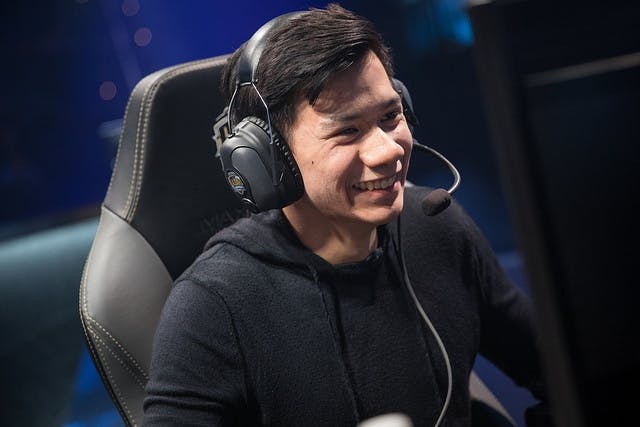
Think back to 2013, when esports was still much smaller than it is today. Games such as CS: GO, Dota 2 and League of Legends were only a few years old. But they were already extremely popular with some titles featuring millions of dollars in prize money.
There was one moment that emerges as a pivotal moment in the widespread acceptance of esports.
Historically the P1-A visas are issued to ‘internationally Recognized Athletes’ in the United States. It is issued to athletes who are individuals or in a team to participate in various athletic programs in the US and to promote themselves or their team and sport. On a broader scale, it can also be extended to entertainment groups. But for the purposes of the article, we are going to focus on it as the athlete visa - the P1A visa.
What are the eligibility criteria for a P1A visa?

- Athletes must have participated in a major US sports league.
- Athletes must have participated in a US college, university, or intercollegiate sports league.
- Athletes must have participated in a national or international level competition or event.
- Athletes must have been nationally or internationally ranked in a high position.
- Athletes must have obtained a national or international award for their excellence.
Before 2013, professional players in the LCS had to go through a complicated process to secure a visa in the US. Sometimes players would go to the US on a tourist visa, which raised a different set of problems for most athletes.
After significant lobbying and efforts by Riot Game, the LCS was added as one of the esports leagues to be recognized. This meant players applying for a P1-A visa had a much-simplified process in the United States.
"This is a watershed moment," Riot Games vice president of esports Dustin Beck told Polygon. "It validates eSports as a sport. Now we have the same designation as the NBA or NHL or other professional sports leagues. This opens the gates for other professional League of Legends players to make the transfer to U.S. teams. It's like David Beckham coming to LA Galaxy."
One of the biggest obstacles in securing a P1-A visa was due to the fact that esports was not considered to be a stable career choice. It was still 2013 and the very early years of the modern era of esports.
“We had to get endorsements from participants and prove that this is a consistent, viable career path and people can make a living playing games.” Riot Games VP Dustin Beck told Polygon.
Canadian native, Danny "Shiphtur" Le, became the first athlete to secure a P1-A visa for esports.
Different Paths to success
Just like physical sports, the term esports encompasses a wide variety of video game competitions. Each title has taken a different route to varying degrees of success. The time around 2010 was one of the golden years for competitive video games with titles such as League of Legends, CS: GO, Dota 2 coming out. There were several other titles as well, but history remembers the victors.
Dota 2

Produced by Valve and developed by Icefrog, the name behind several years of updates for Warcraft’s custom Map - Defense of the Ancient, Dota 2 was one of the most successful games to be produced. The Multiplayer online battle arena game is an extremely complex game that takes time for users to truly understand its difficulties.
Valve unveiled Dota 2 with The International during the five-day trade show GamesCom in Cologne, 2011. The event was also used as a launching pad for the game to the worldwide audience. The 16 participating teams had already received invites earlier to prepare for the tournament. Soon after, beta invites started rolling out to general users.
The first tournament, The International, has remained a staple of the Dota 2 esports scene. Every year, the best Dota 2 teams get together to compete for the glory of being the best team in the game.
In 2013, Valve released a battle pass that would crowdfund the MOBA game. 25% of all battle pass proceeds contribute to The International’s prize pool. As Dota 2’s player base grew, so did the prize pool. In 2021, the TI11 prize pool stood at a staggering $40,018,195, significantly higher than the prize pools of most other esports tournaments in that year.
But the towering TI prize pool has also resulted in diminishing importance for every other tournament in the Dota 2 scene. Despite this, Dota 2 remains one of the Top four esports titles as of 2022.
CS: GO
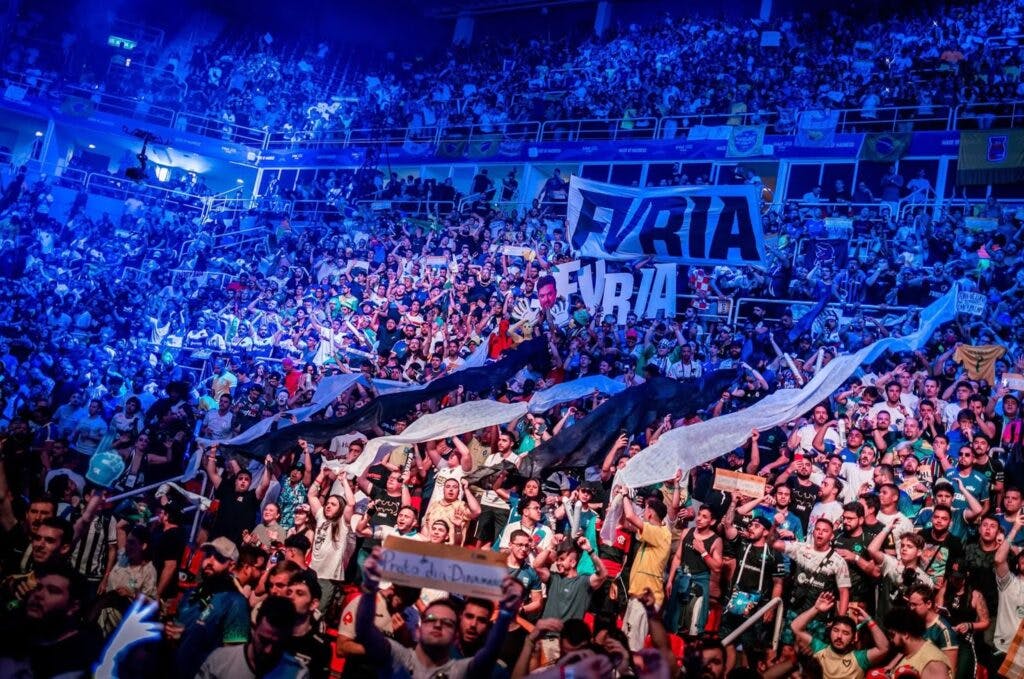
Counter-Strike has a long history of being ‘THE FPS’ title in esports. The game has a long history dating back to 1999 when it was released as a mod to Half-Life, CS has seen multiple updates and titles over the years.
In 2011, Valve announced it was developing a new Counter-Strike title - Counter-Strike Global Offensive. Developed in conjunction with Seattle-based Hidden Path Entertainment, CS: GO didn’t get the early reception Valve would hope for. But with continuous feedback from the pro community, Valve worked on key indicators in the game and ultimately the game saw significant improvements and acceptance.
The CS: GO esports scene has largely been a free arena with third-party tournament organizers hosting events throughout the year. There are two Valve-hosted events in the year - The CS: GO Majors - which hold the prestige of crowning the best teams in the world. However, unlike Dota 2, the CS: GO Majors do not boast crowdfunded prize pools. Despite this, the CS: GO Major prize pools have traditionally been the highest-paying events in the calendar year.
Valve usually keeps a distance from CS: GO esports except in extenuating circumstances when they have to step in to make a decision. Despite this, CS: GO has steadfastly maintained its position as the numero uno FPS esports title.
League of Legends
League of Legends is the No. 1 esports title today. The game was released in 2009 and Riot Games has been the driving force behind much of today's esports infrastructure. From the Watershed moment in esports, where an LoL player became the first to receive the P1-A visa to enter the United States to massive viewership numbers, Riot continues to deliver on multiple fronts.
In addition, the League of Legends broadcast is a formal affair often serving as an entry point for non-endemic viewers into the MOBA title. League of Legends traces its roots back to the same source as valve’s Dota 2, but that’s where the similarities end.
With League of Legends, Riot has adopted a closed-circuit system where the game publisher controls all aspects of the esports ecosystem. But League of Legends also boasts the highest viewership numbers amongst all PC games with 5,147,701 peak concurrent viewers, just behind Free Fire.
Overwatch League
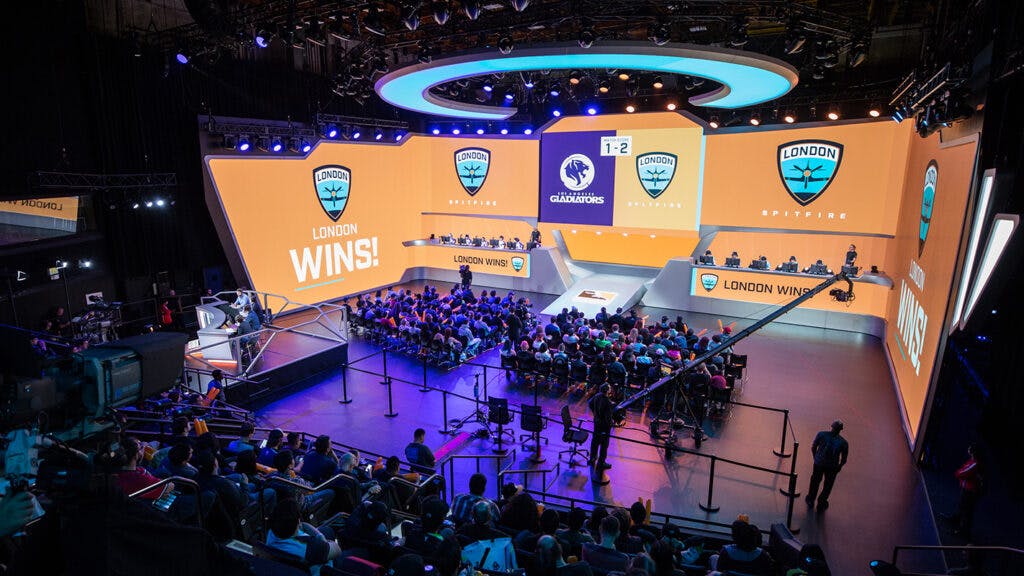
When Activision Blizzard released Overwatch in 2016 it was an instant hit. Activision Blizzard decided to bring Overwatch esports in-house with a city-based franchise league system. Individual franchises were sold for $20 million in Year 1 with franchises in subsequent years selling for much more.
However, just as the League was supposed to move to a Home and Away system on a global scale, the pandemic forced things online. OWL continued with the online format before announcing all competition would move to North America for 2023.
OWL is in a unique position as Activision Blizzard released a new game - Overwatch 2 - in 2022. With the new game came a 5v5 format (previously 6v6) causing a massive upheaval in terms of team compositions and player signings.
The Overwatch League boasts some big names as franchise owners including Kraft Group, Beasley Media Group, Comcast Spectacor, NetEase, Huya Inc. amongst others. There are also multiple traditional esports organizations that own franchise spots in the Overwatch League.
In terms of esports structure, the Overwatch League is unique partly because of its city-based format. It emulates traditional sports providing a level of familiarity to external investors. However, it’s quite different than physical sports franchises with similar formats due to its global scale.
Battle Royale
Epic Games pivoted to the battle royale mode after PUBG Mobile and it quickly became one of the most popular video games on the planet. With constant pop culture crossovers, Fortnite boasted over 80 million concurrent players at its peak. It also featured regular events within the game which included concerts by artists like Marshmallow, Ariana Grande, and more, events with Marvel Cinematic themes as well as multiple movie characters making an appearance in the game.
In 2018, Epic Games famously announced it will invest nearly $100 million to boost its esports initiatives. While that investment might not have yielded dividends, FNCS (Fortnite Championship Series) continues to date with hundreds of contestants from all over the world dropping from the battle bus.
Battle Royale extends beyond Epic Games’ Fortnite. Multiple mobile games such as PUBG:M, Free Fire, and many more. The battle royale tournaments see nearly a hundred players competing at the same time on a different setup than the traditional 5v5 setups of other games.
What’s next for esports?
Esports is a very generic term used to describe competition in video games. As new games emerge and as gaming starts adopting new technologies, esports will also evolve to accommodate these changes. In recent years, we’ve seen new kinds of games released such as the Battle Royale genre which took the world by storm. New titles such as Overwatch and Valorant have added much-needed variety to the FPS space. 2023 will be a year where the esports industry might see drastic changes from investments to the Olympics.
Esports.gg is the place where you can find everything you need to know about esports. So stay tuned to esports for the latest information about this wonderful industry.
